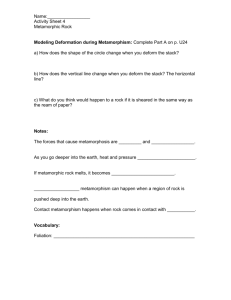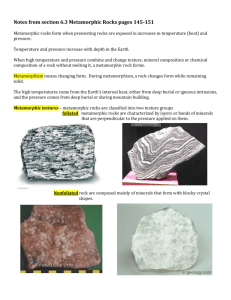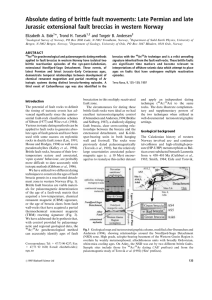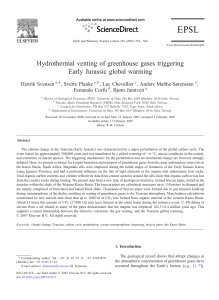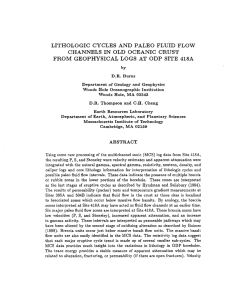Quiz 7 Sediments and Metamorphic Rocks
advertisement
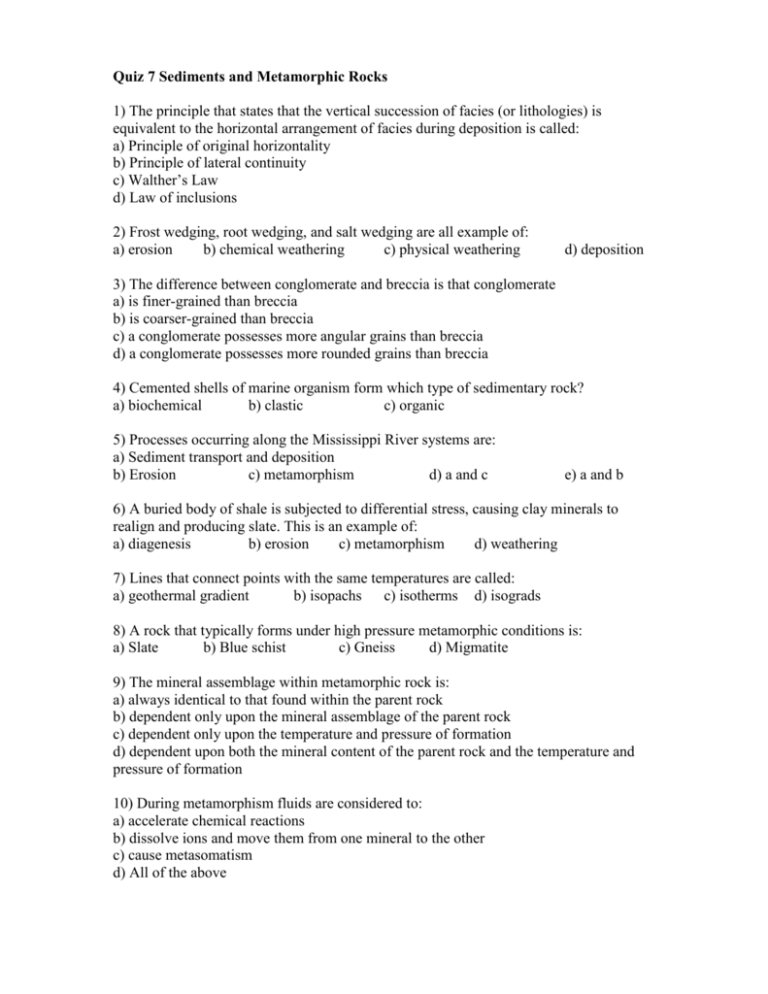
Quiz 7 Sediments and Metamorphic Rocks 1) The principle that states that the vertical succession of facies (or lithologies) is equivalent to the horizontal arrangement of facies during deposition is called: a) Principle of original horizontality b) Principle of lateral continuity c) Walther’s Law d) Law of inclusions 2) Frost wedging, root wedging, and salt wedging are all example of: a) erosion b) chemical weathering c) physical weathering d) deposition 3) The difference between conglomerate and breccia is that conglomerate a) is finer-grained than breccia b) is coarser-grained than breccia c) a conglomerate possesses more angular grains than breccia d) a conglomerate possesses more rounded grains than breccia 4) Cemented shells of marine organism form which type of sedimentary rock? a) biochemical b) clastic c) organic 5) Processes occurring along the Mississippi River systems are: a) Sediment transport and deposition b) Erosion c) metamorphism d) a and c e) a and b 6) A buried body of shale is subjected to differential stress, causing clay minerals to realign and producing slate. This is an example of: a) diagenesis b) erosion c) metamorphism d) weathering 7) Lines that connect points with the same temperatures are called: a) geothermal gradient b) isopachs c) isotherms d) isograds 8) A rock that typically forms under high pressure metamorphic conditions is: a) Slate b) Blue schist c) Gneiss d) Migmatite 9) The mineral assemblage within metamorphic rock is: a) always identical to that found within the parent rock b) dependent only upon the mineral assemblage of the parent rock c) dependent only upon the temperature and pressure of formation d) dependent upon both the mineral content of the parent rock and the temperature and pressure of formation 10) During metamorphism fluids are considered to: a) accelerate chemical reactions b) dissolve ions and move them from one mineral to the other c) cause metasomatism d) All of the above


